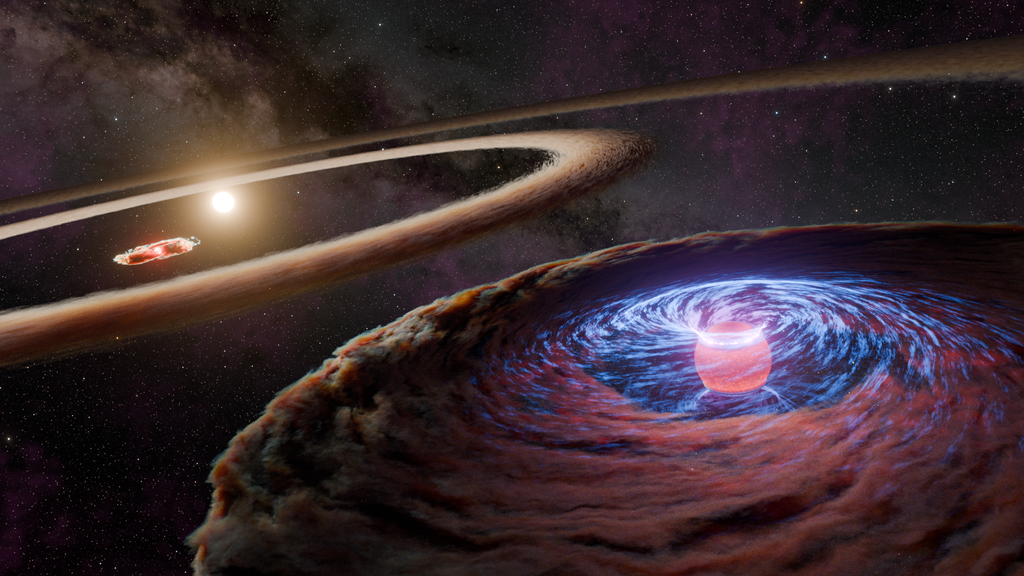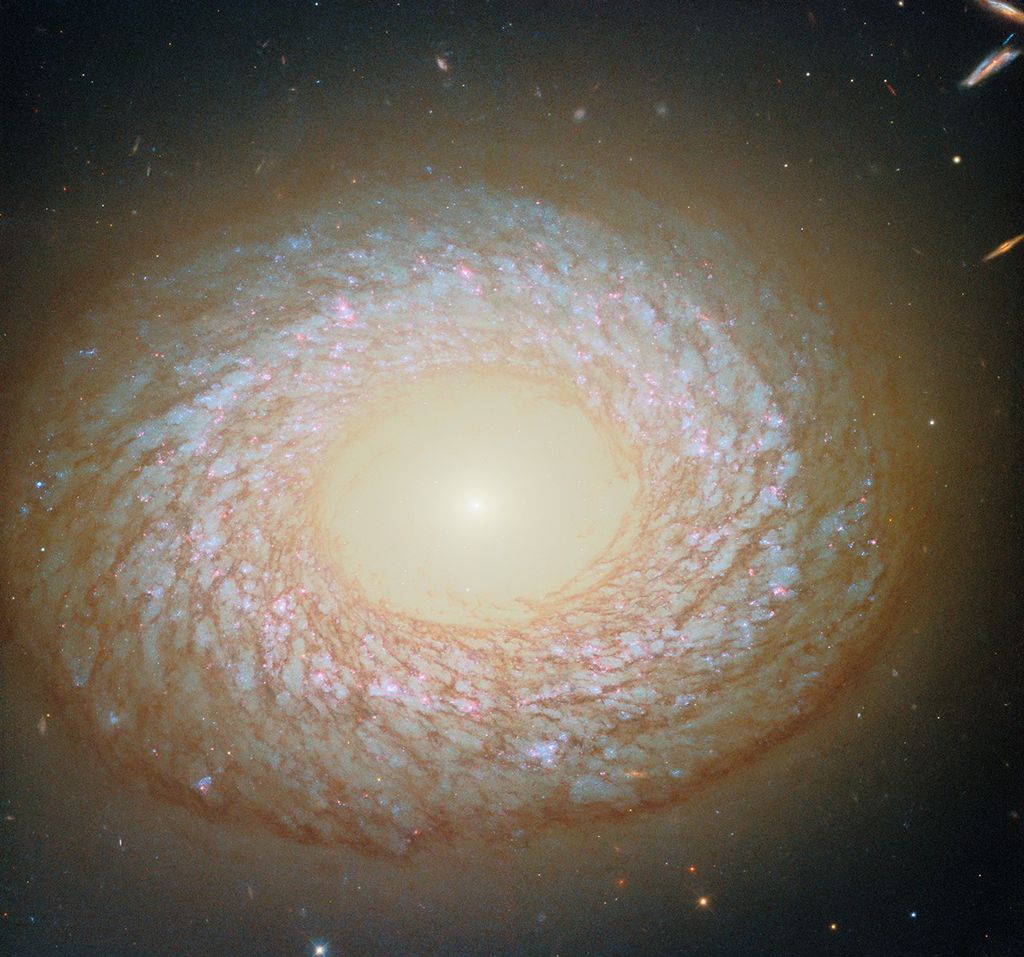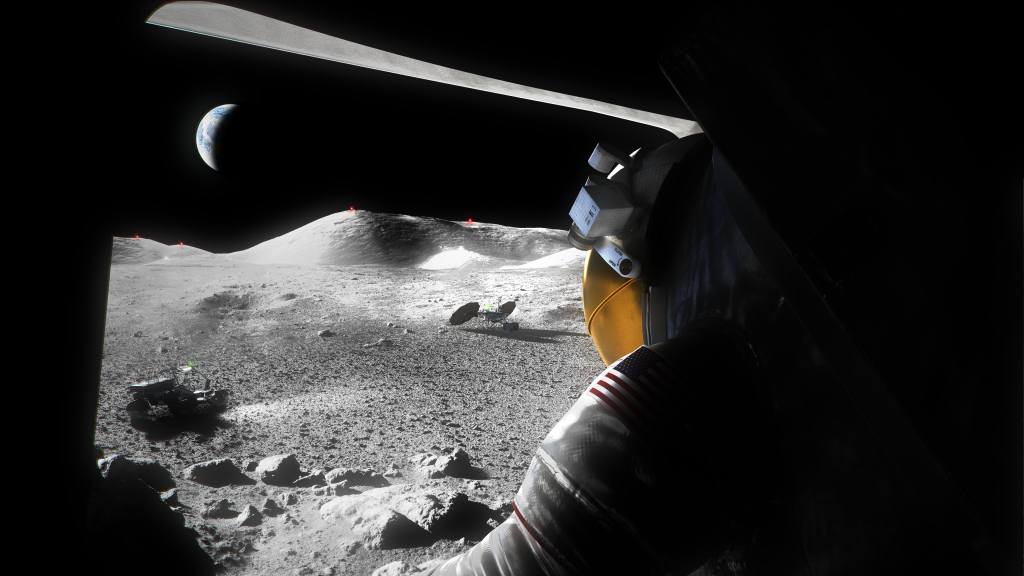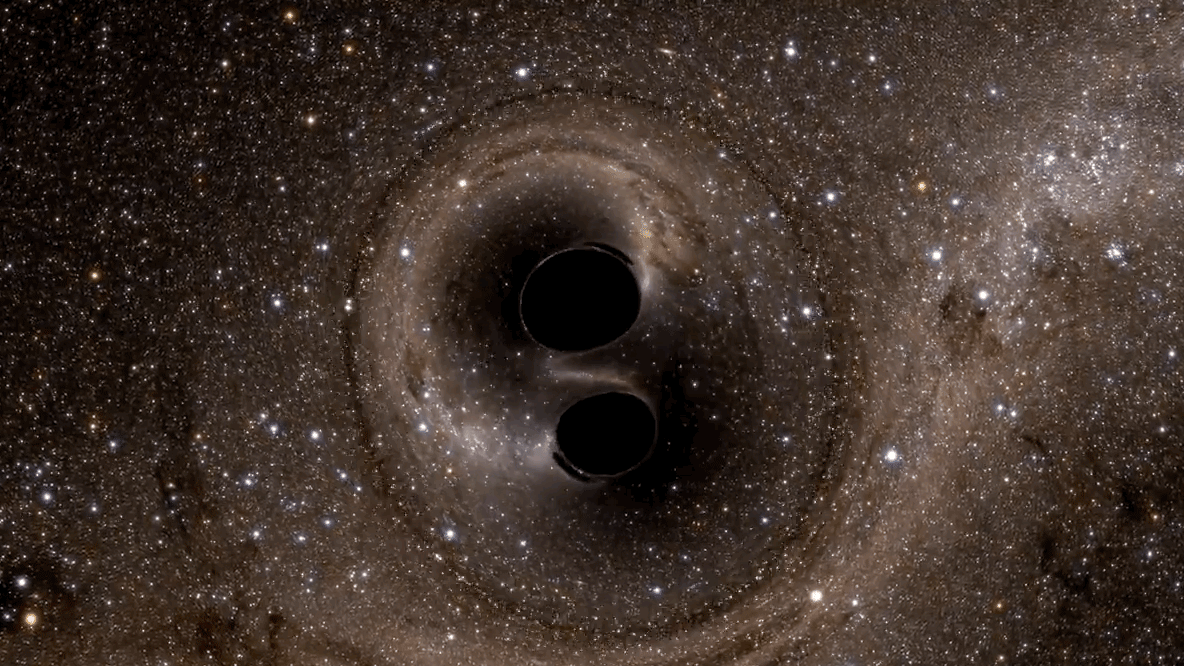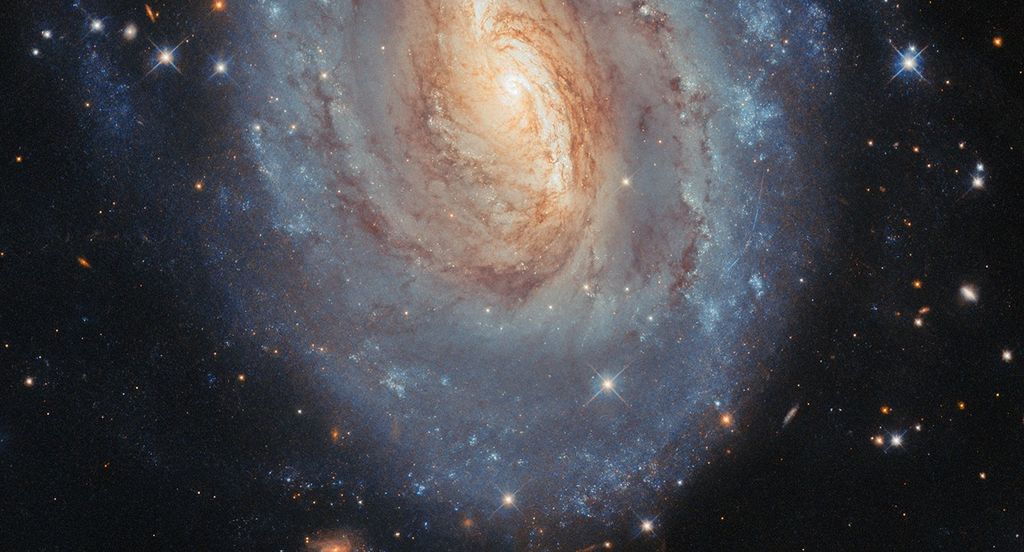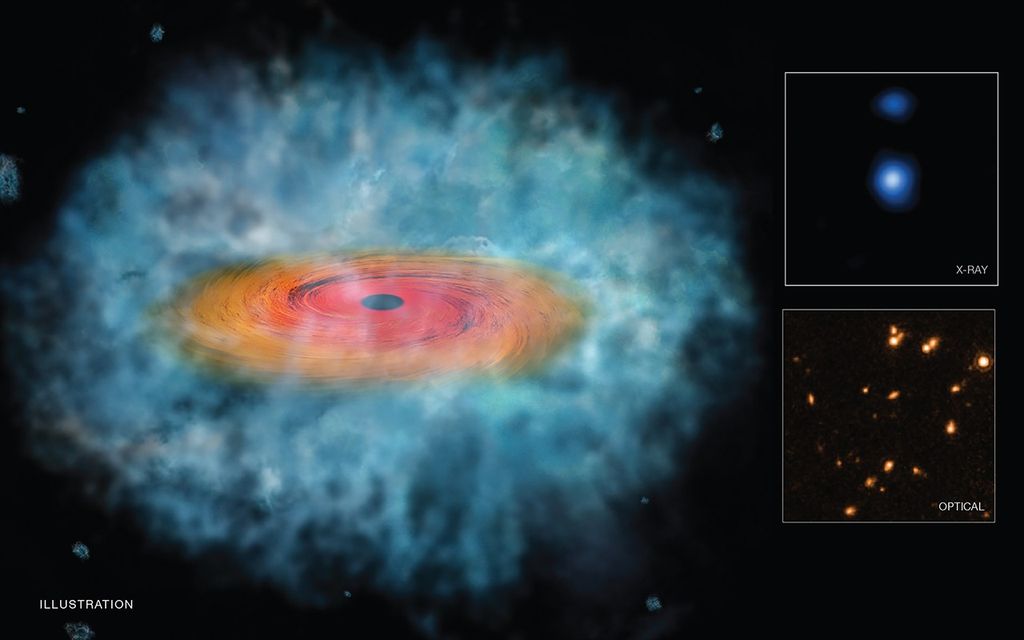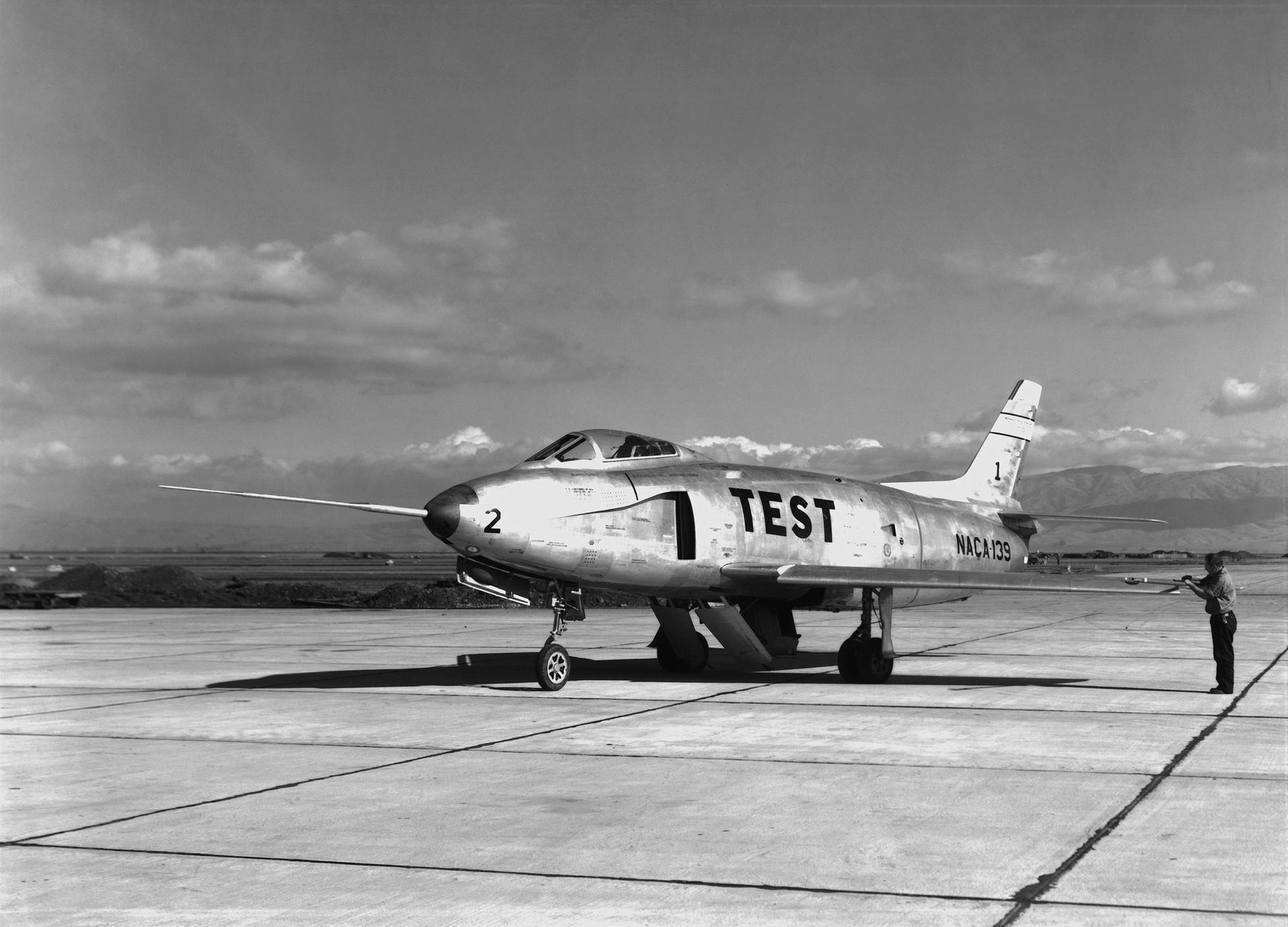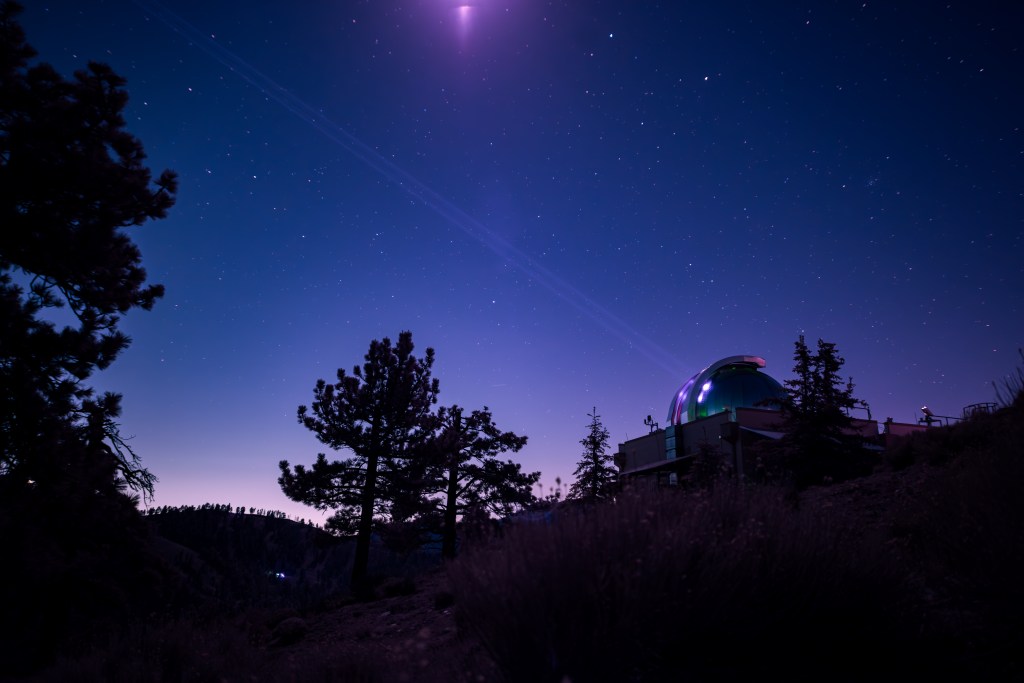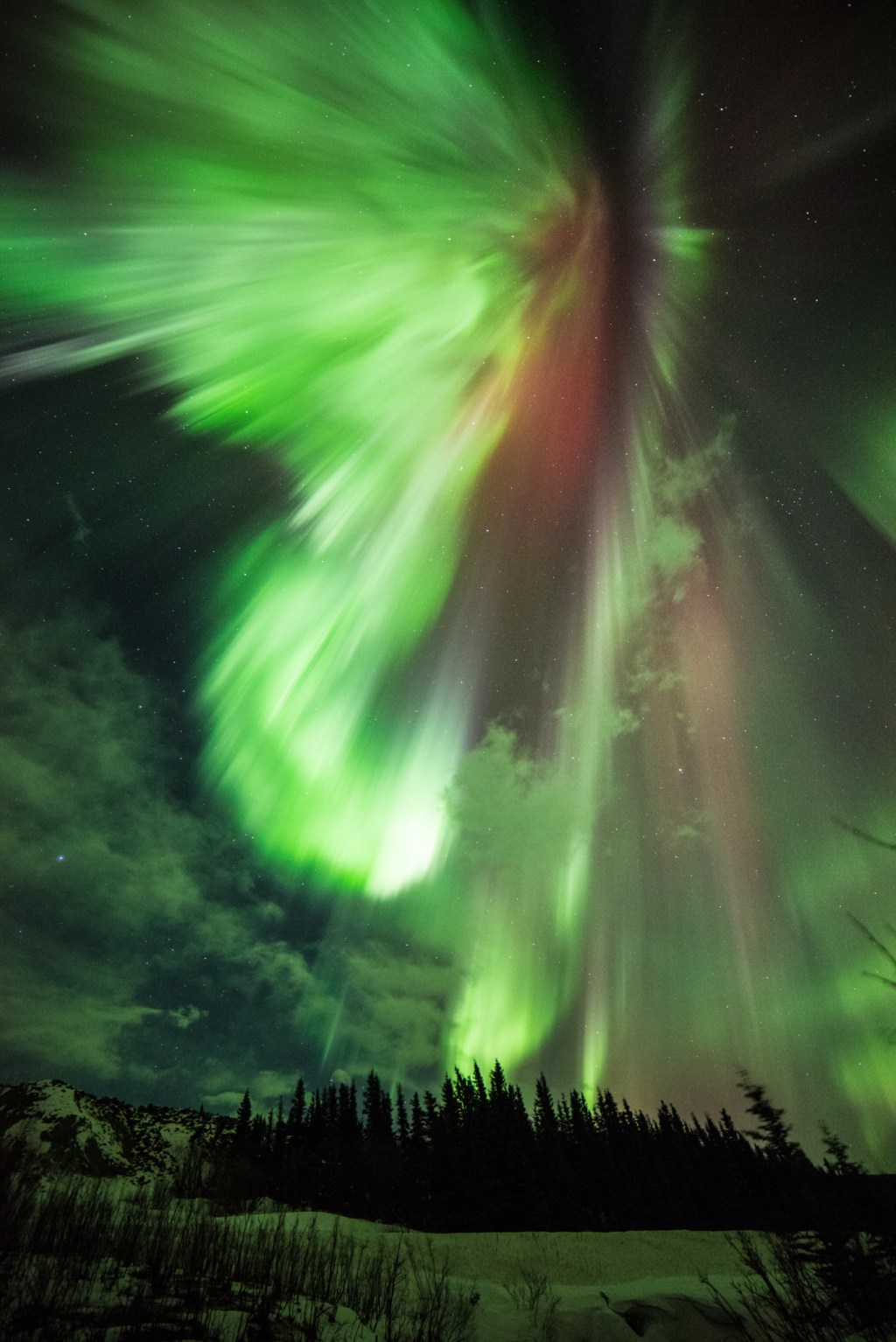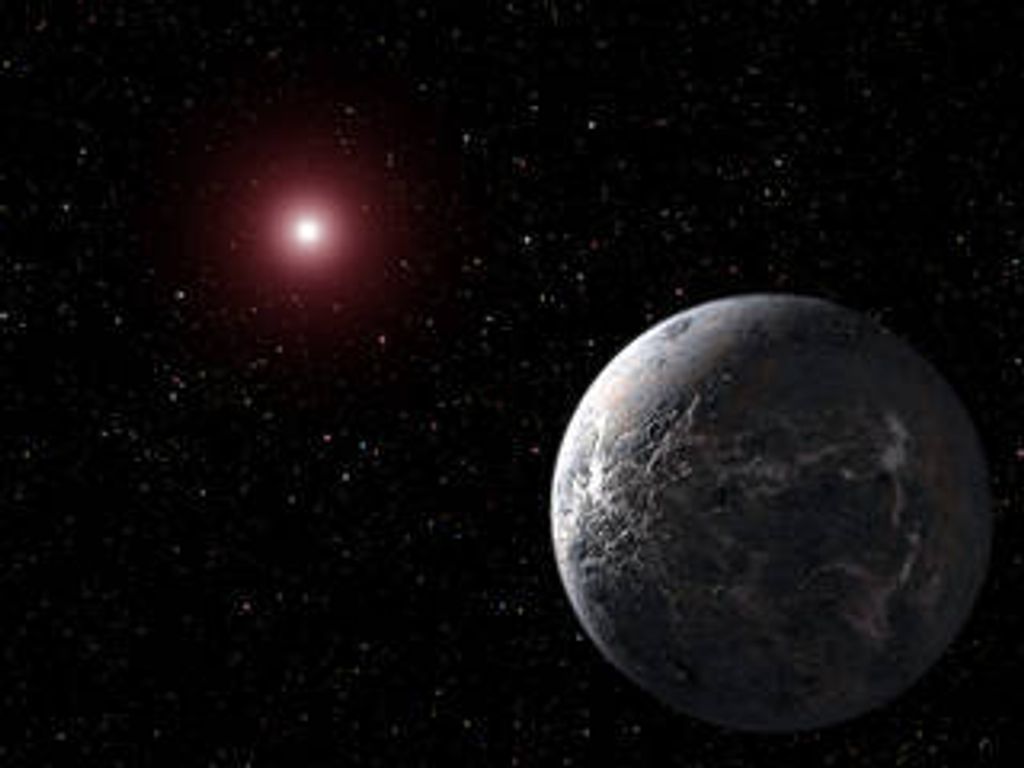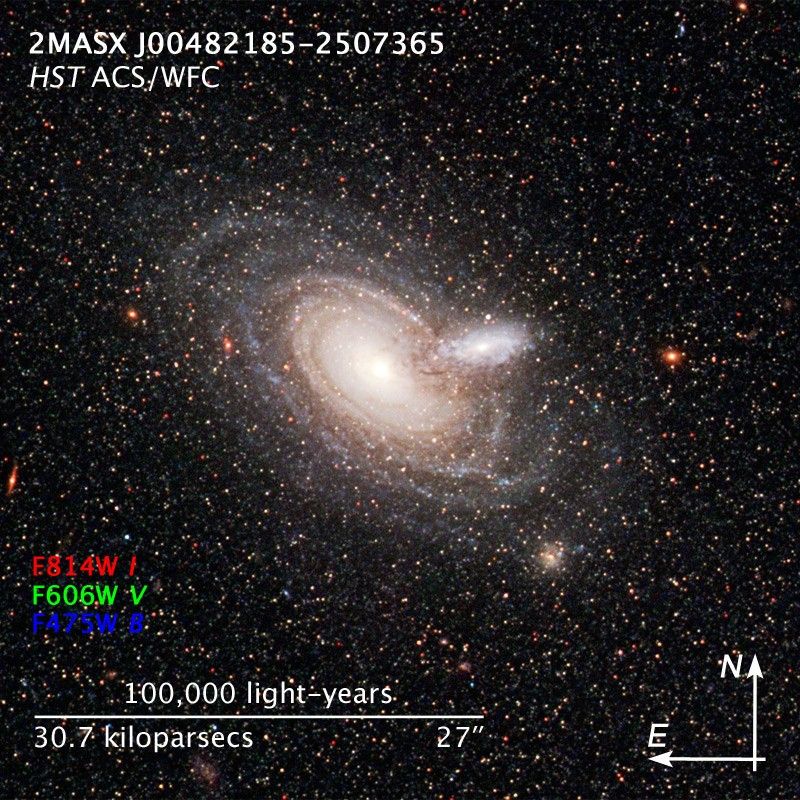1 min read
Overlapping Galaxies 2MASX J00482185-2507365

NASA's Hubble Space Telescope has captured a rare alignment between two spiral galaxies. The outer rim of a small, foreground galaxy is silhouetted in front of a larger background galaxy. Skeletal tentacles of dust can be seen extending beyond the small galaxy's disk of starlight.
Such outer dark dusty structures, which appear to be devoid of stars, like barren branches, are rarely so visible in a galaxy because there is usually nothing behind them to illuminate them. Astronomers have never seen dust this far beyond the visible edge of a galaxy. They do not know if these dusty structures are common features in galaxies.
Understanding a galaxy's color and how dust affects and dims that color are crucial to measuring a galaxy's true brightness. By knowing the true brightness, astronomers can calculate the galaxy's distance from Earth.
Astronomers calculated that the background galaxy is 780 million light-years away. They have not as yet calculated the distance between the two galaxies, although they think the two are relatively close, but not close enough to interact. The background galaxy is about the size of the Milky Way Galaxy and is about 10 times larger than the foreground galaxy.
Most of the stars speckled across this image belong to the nearby spiral galaxy NGC 253, which is out of view to the right. Astronomers used Hubble's Advanced Camera for Surveys to snap images of NGC 253 when they spied the two galaxies in the background. From ground-based telescopes, the two galaxies look like a single blob. But the Advanced Camera's sharp "eye" distinguished the blob as two galaxies, cataloged as 2MASX J00482185-2507365. The images were taken on Sept. 19, 2006.
The results have been submitted for publication in The Astronomical Journal.
About the Object
- R.A. PositionR.A. PositionRight ascension – analogous to longitude – is one component of an object's position.14h 13m 10.04s
- Dec. PositionDec. PositionDeclination – analogous to latitude – is one component of an object's position.-65° 20' 44.8"
- ConstellationConstellationOne of 88 recognized regions of the celestial sphere in which the object appears.Sculptor
- DistanceDistanceThe physical distance from Earth to the astronomical object. Distances within our solar system are usually measured in Astronomical Units (AU). Distances between stars are usually measured in light-years. Interstellar distances can also be measured in parsecs.780 million light-years (240 megaparsecs)
- DimensionsDimensionsThe physical size of the object or the apparent angle it subtends on the sky.This image is roughly 50 arcseconds (180,000 light-years or 56 kiloparsecs) wide.
About the Data
- Data DescriptionData DescriptionProposal: A description of the observations, their scientific justification, and the links to the data available in the science archive.
Science Team: The astronomers who planned the observations and analyzed the data. "PI" refers to the Principal Investigator.HST Proposal: 10915 J. Dalcanton (University of Washington) et al. The science team comprises B. Holwerda and R. de Jong (Space Telescope Science Institute), W. Keel (University of Alabama, Tuscaloosa), and J. Dalcanton and B. Williams (University of Washington). - InstrumentInstrumentThe science instrument used to produce the data.HST>ACS/WFC
- Exposure DatesExposure DatesThe date(s) that the telescope made its observations and the total exposure time.September 19, 2006, Exposure Time: 1.9 hours
- FiltersFiltersThe camera filters that were used in the science observations.F475W (B), F606W (V), and F814W (I)
- Object NameObject NameA name or catalog number that astronomers use to identify an astronomical object.2MASX J00482185-2507365
- Object DescriptionObject DescriptionThe type of astronomical object.Overlapping Galaxies
- Release DateSeptember 16, 2008
- Science ReleaseGalaxy Silhouettes
- CreditNASA, ESA, and The Hubble Heritage Team (STScI/AURA); Acknowledgment: B. Holwerda (Space Telescope Science Institute) and J. Dalcanton (University of Washington)

The image is a composite of separate exposures made by the ACS instrument on the Hubble Space Telescope. Three filters were used to sample broad wavelength ranges. The color results from assigning different hues (colors) to each monochromatic image. In this case, the assigned colors are: Blue: F475W (B) Green: F606W (V) Red: F814W (I)

Share
Details
Claire Andreoli
NASA’s Goddard Space Flight Center
Greenbelt, Maryland
claire.andreoli@nasa.gov

